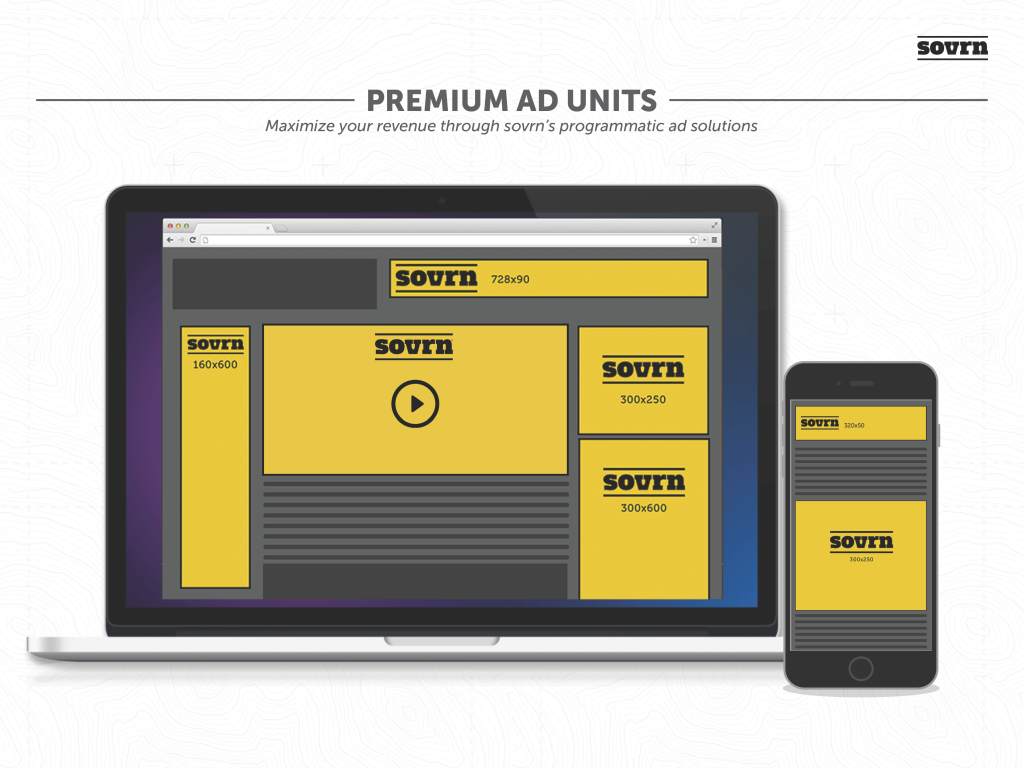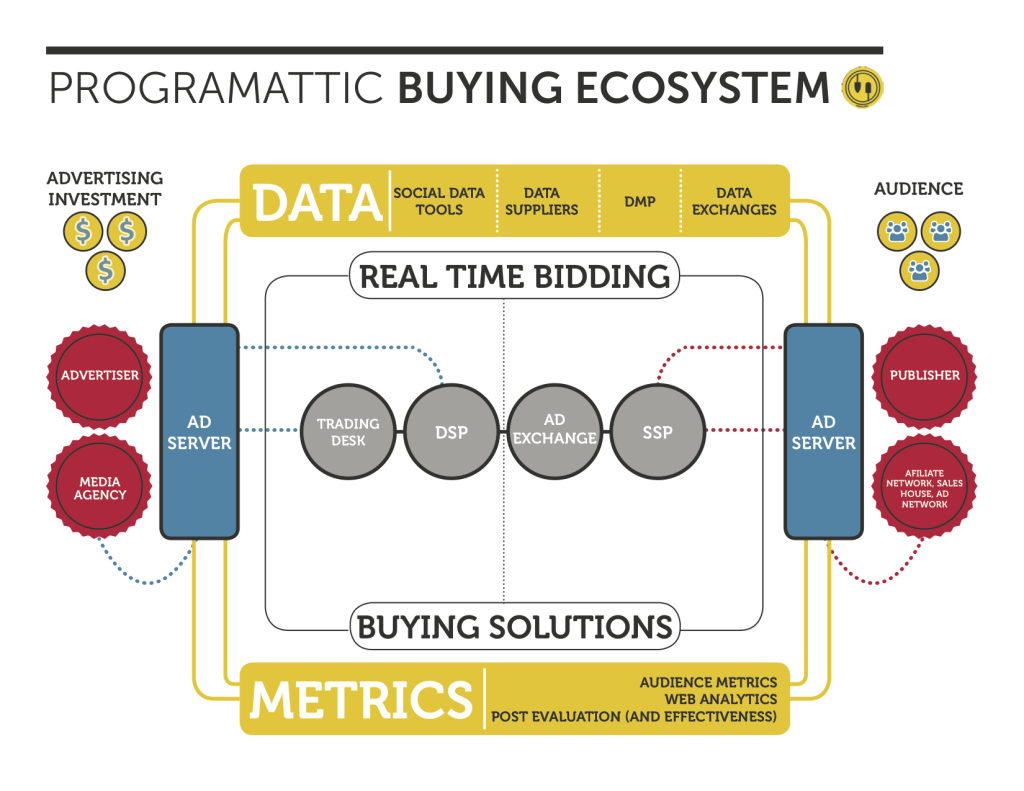What is display advertising?
Display advertising is the more popular of the two main forms of online advertising. It utilizes visual creatives to convey a message as opposed to search advertising which is purely text based. Display ads come in standardized sizes which makes it easy for publishers and advertisers to work cooperatively without the need for direct communication. This is possible thanks to publisher-facing advertising partners (like sovrn!) who put ad inventory on the market and make it available for purchase.
Display’s effectiveness and simplicity for both advertisers and publishers has made it the preferred online advertising strategy and it is only becoming bigger as new technology enhances it.
Let’s go over some of the terminology you will see regarding display advertising:
The Ads
Page views
A page view is registered whenever a website loads for a user.
Ad Requests
When a page loads, the available ad units send a request to ad servers to fill the impression. This is when advertisers receive insight into the website and who the visitor is, allowing them to decide how much that impression is worth.
Ad Impressions
An impression is when an individual ad is served to a single user. If a page had 3 ad units on it, each user to visit and fully load the website would count as 3 impressions.
Ad Zones
Also referred to as ad inventory or units, ad zones are where advertisements are shown on a website. They are typically located around the perimeter of the page in order to be less obtrusive and are sized according to industry standards. This is what publishers are selling to advertisers.
ATF/BTF
“Above The Fold” and “Below The Fold” refer to the placement of ad zones on a website. ATF means that the ad space is in the top half of the website and the user won’t have to scroll to see it and below the fold means it is located near the bottom of the page. The value of ATF ad spaces are higher since it is almost guaranteed that a visitor will see it.
Ad Sizes
These are the names for the standard ad unit sizes
- Banner/Leaderboard (728px x 90px)
- Rectangle (300px x 250px)
- Skyscraper (160px x 600px)
IBV
In-banner video is a form of display advertising that automatically plays a video instead of an image and pays a much higher CPM (rate at which advertiser is willing to pay for every 1,000 impressions)
How It Works
The goal of advertisers is to reach as many potential clients as possible. Thanks to cookies and site analytics, advertisers are now capable of knowing if a website appeals to their target audience and if an individual user is valuable to them. Advertisers get this from ad networks who are paid to facilitate the buying of ad inventory. The money made from advertisers is then split with the publisher.
Programmatic Advertising
Programmatic is an automated way of buying and selling ad inventory. Ad inventory is put on the market (called an exchange) and made available to advertisers for purchase.
Real-Time Bidding (RTB)
RTB is what makes selling individual impressions on your site possible. Ad networks present your site and audience to advertisers and they make bids based on how valuable that impression is to them. This happens for each ad unit and takes mere milliseconds for advertisers to calculate the worth and place a bid.
Ad Exchange
Exchanges are the marketplaces that publishers, advertisers, and ad networks do business on. This is where data is processed and traded in order to set prices and in the end serve an ad.
Ad Network
Networks are the middlemen between publishers and advertisers. They facilitate the buying and selling of ad inventory through the process of real time bidding.
Ad Server
This is where the actual advertisements come from. Servers are responsible for delivering creatives, deciding what ad is shown, and in some cases tracking data.

How publishers get paid
CPA
Cost-per-acquisition campaigns pay out whenever a visitor on your site interacts with an advertisement in a way that benefits the advertiser. These actions consist of registering with your email, answering a question, or making a purchase after visiting the site through the advertisement. Essentially if a visitor does something that is valuable to the advertiser, you get paid.
CPC
Cost-per-click means you get paid when someone clicks on an advertisement. The individual payouts for this are not as large as CPA but since all a visitor has to do is click it ends up paying much more frequently.
CPM
Cost-per-mille (thousand) has the smallest payout per individual ad served but it also pays the most consistently since it doesn’t require a user to do anything besides load the page. Advertisers pay each time one of their advertisements is loaded on a webpage and this CPM measures how much you make for every thousand impressions.
RPM
Revenue-per-mille is a metric used almost exclusively in Google Adsense. It is a measurement of your revenue per thousand impressions but it can lead to some confusion. If you want to learn more about RPM check out our post, RPM vs CPM
The Benefits
Display advertising is a must if you want to monetize your site. It is efficient, effective, and publishers of any size can take advantage of it. As a publisher all you need to do to start making money through display is provide ad spaces and sign up with an ad partner. Your inventory will be made available to the market and all you need to worry about is optimizing your ad units to improve the user experience.
Display advertising varies in customizability but the publisher always has some level of control. At the more automated end you still get to control how many ad units you have and where they are located, allowing you to make any ad fit well on your site. When you become bigger and start doing direct deals you can have advertisers customize their ads for you. Site skins and other custom campaigns pay big and can make your site look like a hot commodity.
All you really need is traffic and non-obtrusive ad units in order to make money. Whether you have advertisers coming to you with custom campaign proposals or are utilizing programmatic advertising you can make your site profitable through display.

